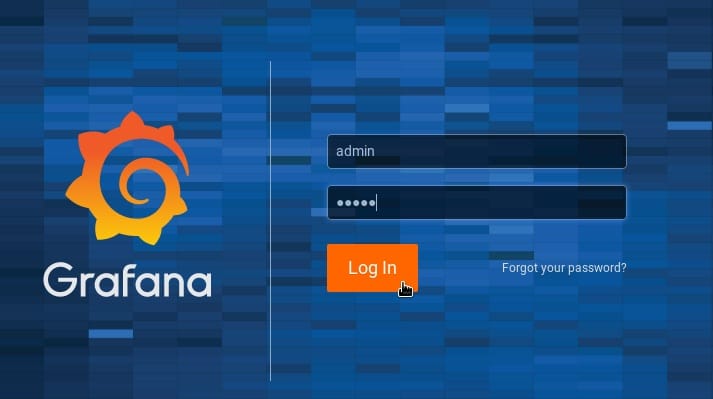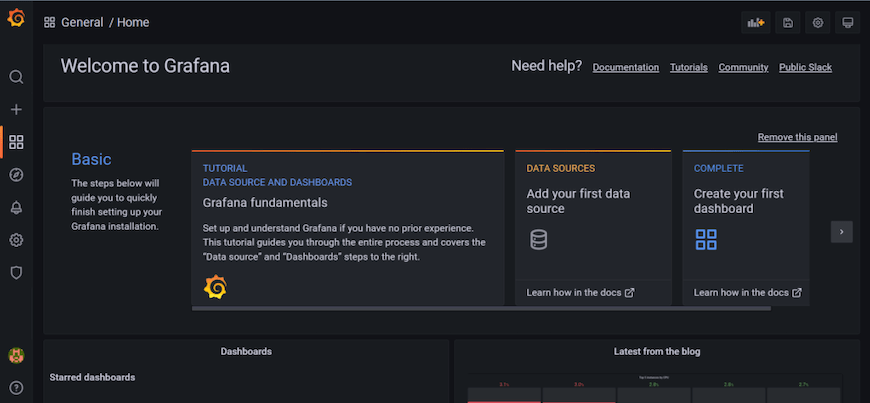How To Install Grafana on Fedora 42

Grafana stands as one of the most powerful open-source data visualization and monitoring platforms available today. This comprehensive monitoring solution transforms raw metrics into meaningful insights through beautiful, interactive dashboards. When paired with Fedora 42, a cutting-edge Linux distribution known for its stability and performance, Grafana becomes an exceptional tool for system administrators, DevOps engineers, and IT professionals seeking robust monitoring capabilities.
Installing Grafana on Fedora 42 provides numerous advantages, including seamless package management, enhanced security features, and optimal performance. This detailed guide walks through every aspect of the installation process, from initial system preparation to advanced configuration and troubleshooting. Whether managing a single server or enterprise infrastructure, this tutorial ensures successful Grafana deployment with production-ready configurations.
Prerequisites and System Requirements
Before beginning the Grafana installation on Fedora 42, ensure your system meets the minimum hardware specifications. A modern x86_64 or ARM64 processor provides optimal performance, while 2GB of RAM serves as the absolute minimum, though 4GB or more is recommended for production environments. Storage requirements depend on data retention policies, but allocating at least 10GB of free disk space ensures adequate room for installation, logs, and initial dashboard configurations.
Software prerequisites include a fresh Fedora 42 installation with the latest system updates applied. The DNF package manager, included by default, handles all software installations efficiently. Network connectivity is essential for downloading packages and accessing remote data sources. Administrative privileges through sudo or root access enable proper installation and configuration procedures.
Verify your Fedora 42 version compatibility by executing cat /etc/fedora-release in the terminal. This command confirms the exact distribution version and ensures compatibility with Grafana’s latest releases. Additionally, check available system resources using free -h for memory and df -h for disk space to prevent installation issues.
Preparing Your Fedora 42 System
System Updates and Package Management
Begin by updating all existing packages to ensure system stability and security. Open a terminal and execute the following commands with administrative privileges:
sudo dnf update -y
sudo dnf install -y curl wget gnupg2 software-properties-commonThese commands update the package database, install system updates, and add essential tools required for Grafana installation. The process may take several minutes depending on the number of available updates and network speed.
Verify the installation of required dependencies by checking their versions:
curl --version
wget --version
gpg --versionNetwork and Hostname Configuration
Configure a meaningful hostname for better organization and easier identification within monitoring dashboards. Replace “grafana-server” with your preferred hostname:
sudo hostnamectl set-hostname grafana-serverVerify the hostname change by running hostnamectl status. This step enhances organization, especially when managing multiple monitoring instances across different environments.
Ensure network interfaces are properly configured and accessible. Check network connectivity by pinging external hosts and verifying DNS resolution works correctly. These preliminary checks prevent connectivity issues during package downloads and later configuration steps.
Installing Grafana on Fedora 42
Method 1: Installing from RPM Repository (Recommended)
The official Grafana RPM repository provides the most reliable installation method, ensuring automatic updates and proper dependency management. This approach integrates seamlessly with Fedora’s package management system.
First, add the official Grafana RPM repository to your system. Create the repository configuration file:
sudo tee /etc/yum.repos.d/grafana.repo > /dev/null << 'EOF'
[grafana]
name=grafana
baseurl=https://rpm.grafana.com
repo_gpgcheck=1
enabled=1
gpgcheck=1
gpgkey=https://rpm.grafana.com/gpg.key
sslverify=1
sslcacert=/etc/pki/tls/certs/ca-bundle.crt
EOFImport the GPG key for package verification and security:
sudo rpm --import https://rpm.grafana.com/gpg.keyUpdate the package database to include the new repository:
sudo dnf clean all
sudo dnf makecacheInstall Grafana using the DNF package manager:
sudo dnf install -y grafanaThis command automatically downloads and installs Grafana along with all required dependencies. The installation process creates the necessary system users, directories, and service files for proper operation.
Method 2: Manual RPM Package Installation
For environments requiring offline installation or specific version control, manual RPM package installation provides an alternative approach. Download the latest RPM package from the official Grafana website:
wget https://dl.grafana.com/rpm/grafana-10.2.3-1.x86_64.rpmVerify the package integrity using GPG signature verification. This step ensures the downloaded package hasn’t been tampered with during transit.
Install the package using DNF’s localinstall command:
sudo dnf localinstall -y grafana-10.2.3-1.x86_64.rpmThis method works well for air-gapped environments or when maintaining specific version requirements across multiple servers.
Method 3: Standalone Binary Installation
Advanced users may prefer standalone binary installation for custom deployment scenarios. Download and extract the binary archive:
wget https://dl.grafana.com/enterprise/release/grafana-enterprise-10.2.3.linux-amd64.tar.gz
tar -zxvf grafana-enterprise-10.2.3.linux-amd64.tar.gzCreate a dedicated system user for Grafana:
sudo useradd --system --shell /bin/false grafana
sudo mkdir -p /opt/grafana
sudo mv grafana-10.2.3/* /opt/grafana/
sudo chown -R grafana:grafana /opt/grafanaConfigure the systemd service manually by creating the service file and setting proper permissions. This method offers maximum control over the installation location and configuration.
Configuring Grafana Server
Initial Service Configuration
Enable and start the Grafana service using systemctl commands. These commands ensure Grafana starts automatically during system boot:
sudo systemctl daemon-reload
sudo systemctl enable grafana-server
sudo systemctl start grafana-serverVerify the service status to confirm successful startup:
sudo systemctl status grafana-serverA properly running service displays “active (running)” status with recent log entries showing successful initialization. If issues occur, examine the logs using journalctl -u grafana-server -f for real-time troubleshooting information.
Basic Configuration Settings
The primary configuration file /etc/grafana/grafana.ini contains numerous settings for customizing Grafana behavior. Before making changes, create a backup copy:
sudo cp /etc/grafana/grafana.ini /etc/grafana/grafana.ini.backupCommon configuration modifications include changing the HTTP port, setting up custom domains, and configuring database connections. Edit the configuration file using your preferred text editor:
sudo nano /etc/grafana/grafana.iniKey configuration sections include:
[server]section for network and HTTP settings[database]section for data storage configuration[security]section for authentication and session management[log]section for logging configuration
Security Hardening
Implement essential security measures immediately after installation. Change the default admin password during first login, but also configure additional security settings in the configuration file.
Disable user registration to prevent unauthorized account creation:
[users]
allow_sign_up = falseConfigure strong session settings:
[session]
session_life_time = 86400
cookie_secure = true
cookie_samesite = strictSet up proper logging for security monitoring:
[log]
level = info
mode = console fileThese configurations enhance security posture and provide better audit capabilities for production deployments.
Firewall and Network Configuration
Firewall Setup
Fedora 42 includes firewalld by default, requiring specific configuration to allow Grafana web interface access. The default Grafana installation listens on port 3000, which needs firewall access for remote connections.
Open the required port permanently using firewalld:
sudo firewall-cmd --permanent --add-port=3000/tcp
sudo firewall-cmd --reloadVerify the firewall rule was added successfully:
sudo firewall-cmd --list-portsFor production environments, consider creating custom firewall zones with specific source IP restrictions:
sudo firewall-cmd --permanent --new-zone=grafana-access
sudo firewall-cmd --permanent --zone=grafana-access --add-port=3000/tcp
sudo firewall-cmd --permanent --zone=grafana-access --add-source=192.168.1.0/24
sudo firewall-cmd --reloadNetwork Access Configuration
Configure network binding options in the Grafana configuration file to control interface access. By default, Grafana binds to all interfaces (0.0.0.0), but production environments often require more restrictive settings.
Edit the server section in /etc/grafana/grafana.ini:
[server]
http_addr = 192.168.1.100
http_port = 3000
domain = grafana.example.comThese settings bind Grafana to a specific IP address and configure the domain name for proper URL generation. Restart the Grafana service after making configuration changes:
sudo systemctl restart grafana-serverFirst-Time Setup and Web Interface Access
Accessing Grafana Web Interface
Navigate to the Grafana web interface using a modern web browser. Enter the server’s IP address or hostname followed by port 3000:
http://your-server-ip:3000The initial login screen appears with default credentials (username: admin, password: admin). Grafana immediately prompts for a password change upon first login, which is mandatory for security compliance.

Create a strong administrative password following these guidelines:
- Minimum 12 characters length
- Combination of uppercase, lowercase, numbers, and special characters
- Avoid common dictionary words or personal information
Initial Configuration Wizard
After successful authentication, explore the main dashboard interface. The welcome screen provides quick access to essential functions including data source configuration, dashboard creation, and user management.
The left sidebar contains navigation options for:
- Dashboards: Creating and managing visualization dashboards
- Explore: Interactive data exploration tools
- Alerting: Setting up monitoring alerts and notifications
- Configuration: System settings and data sources
- Server Admin: User management and system administration

Essential First Steps
Configure the first data source to begin meaningful monitoring. Click on “Configuration” followed by “Data sources” in the left navigation menu. Popular data sources for Fedora systems include Prometheus for metrics collection, InfluxDB for time-series data, and MySQL for database monitoring.
Import sample dashboards to understand Grafana capabilities. Visit the “+” icon in the left sidebar and select “Import” to access community-contributed dashboards from the official Grafana marketplace.
Verify installation success by creating a simple test dashboard with basic panels. This process confirms proper functionality and familiarizes users with the dashboard creation workflow.
Data Source Configuration
Popular Data Sources for Fedora Systems
Grafana supports numerous data source types, each serving specific monitoring requirements. Prometheus integration provides comprehensive system metrics monitoring, making it ideal for infrastructure oversight. InfluxDB excels at storing and querying time-series data with high precision timestamps.
MySQL or MariaDB connections enable database performance monitoring, including query analysis, connection tracking, and storage utilization metrics. Each data source requires specific configuration parameters and authentication credentials.
Connection Setup Process
Adding new data sources follows a standardized process within the Grafana interface. Navigate to “Configuration” > “Data sources” and click “Add data source” to view available options.
For Prometheus configuration:
- Select “Prometheus” from the data source list
- Enter the Prometheus server URL (typically http://localhost:9090)
- Configure authentication if required
- Test the connection using the “Save & test” button
For database connections:
- Choose the appropriate database type (MySQL, PostgreSQL, etc.)
- Enter connection details including hostname, port, database name
- Provide authentication credentials
- Configure SSL settings if required
- Test connectivity before saving
Troubleshoot connection issues by examining error messages and verifying network connectivity between Grafana and data sources. Common problems include firewall restrictions, authentication failures, and incorrect connection parameters.
Basic Dashboard Creation and Management
Creating Your First Dashboard
Dashboard creation begins with understanding panels and visualizations. Panels serve as individual chart components within dashboards, each configured with specific data sources and display options.
Create a new dashboard by clicking the “+” icon in the left sidebar and selecting “Dashboard”. Add the first panel by clicking “Add panel” and selecting appropriate visualization types such as graphs, stat panels, or tables.
Configure panel queries by selecting data sources and defining metrics or database queries. The query editor varies depending on the chosen data source, providing syntax highlighting and auto-completion features for complex queries.
Customize panel appearances through the visualization options, including colors, legends, axes, and thresholds. These customizations enhance readability and highlight important information effectively.
Dashboard Templates and Import
Leverage community-contributed dashboards to accelerate deployment and learn best practices. The official Grafana marketplace contains thousands of pre-built dashboards for common use cases.
Import dashboards using ID numbers or JSON files. Navigate to “+” > “Import” and enter a dashboard ID or upload a JSON configuration file. Popular dashboards for Linux monitoring include Node Exporter Full (dashboard ID: 1860) and System Overview (dashboard ID: 3662).
Customize imported dashboards to match specific environment requirements. Modify data source references, adjust time ranges, and personalize visual elements to create tailored monitoring solutions.
Performance Optimization and Best Practices
System Performance Tuning
Optimize Grafana performance through proper resource allocation and configuration tuning. Monitor system resource usage using tools like htop, iotop, and systemctl status grafana-server to identify potential bottlenecks.
Configure memory settings in the Grafana configuration file:
[database]
max_idle_conn = 2
max_open_conn = 0
conn_max_lifetime = 14400Adjust logging levels to reduce disk I/O impact:
[log]
level = warnDatabase optimization significantly impacts performance, especially for installations with extensive historical data. Regular maintenance tasks include index optimization, data pruning, and connection pool tuning.
Best Practices for Production
Implement regular backup procedures for both configuration files and dashboard definitions. Export important dashboards as JSON files and store them in version control systems for disaster recovery purposes.
Monitor Grafana itself using built-in metrics endpoints. Enable the metrics endpoint in the configuration file:
[metrics]
enabled = trueConfigure external monitoring systems to track Grafana performance, including response times, memory usage, and query execution duration.
Scale deployments using load balancers and database clustering for high-availability requirements. Document configuration changes and maintain deployment procedures for consistent environments.
Troubleshooting Common Issues
Installation Problems
Repository configuration errors commonly occur during initial setup. Verify repository files contain correct URLs and GPG key references. Remove and recreate repository configurations if corruption is suspected:
sudo rm /etc/yum.repos.d/grafana.repo
# Recreate the repository file with proper configurationGPG key import failures prevent package installation and updates. Manually import keys using alternative methods:
curl -s https://rpm.grafana.com/gpg.key | sudo gpg --importDependency conflicts arise when system packages have incompatible versions. Resolve conflicts by updating system packages or using DNF’s conflict resolution features.
Service and Connectivity Issues
Service startup failures require systematic log analysis. Examine Grafana logs using multiple approaches:
sudo journalctl -u grafana-server --since "1 hour ago"
sudo tail -f /var/log/grafana/grafana.logCommon startup problems include configuration file syntax errors, permission issues, and port conflicts. Verify configuration syntax using Grafana’s built-in validation tools.
Port binding conflicts occur when other services use port 3000. Identify conflicting processes:
sudo netstat -tulnp | grep :3000
sudo lsof -i :3000Change Grafana’s port configuration or stop conflicting services to resolve binding issues.
Performance and Configuration Issues
Slow dashboard loading indicates performance bottlenecks in queries, data sources, or system resources. Enable query logging to identify expensive operations:
[log]
filters = query.duration:debugDatabase connection problems manifest as data source errors or timeout messages. Verify connectivity using command-line database clients and network troubleshooting tools.
Authentication and permission issues prevent user access or limit functionality. Review user roles, organization settings, and authentication provider configurations systematically.
Log Analysis and Debugging
Grafana maintains detailed logs in /var/log/grafana/grafana.log by default. Configure log levels and output formats to capture necessary debugging information:
[log]
mode = console file
level = debug
format = jsonCommon error patterns include database connection failures, plugin loading errors, and authentication timeouts. Use log analysis tools like grep, awk, and journalctl to filter and analyze log entries effectively.
Enable debug logging temporarily for intensive troubleshooting sessions, but return to standard logging levels in production to prevent excessive disk usage.
Security Considerations and Hardening
Essential Security Measures
Change all default credentials immediately after installation, including the admin account password and any default API keys. Implement strong password policies through configuration settings:
[security]
admin_user = administrator
admin_password = $__env{GRAFANA_ADMIN_PASSWORD}Implement HTTPS for all communications by configuring SSL certificates. Generate or obtain SSL certificates and update the server configuration:
[server]
protocol = https
cert_file = /etc/grafana/ssl/grafana.crt
cert_key = /etc/grafana/ssl/grafana.keyRestrict network access using firewall rules and network policies. Limit source IP addresses for administrative access and implement VPN requirements for sensitive environments.
Advanced Security Configuration
Configure authentication backends including LDAP, OAuth, or SAML for enterprise integration. These systems provide centralized user management and enhanced security controls:
[auth.ldap]
enabled = true
config_file = /etc/grafana/ldap.tomlImplement role-based access control (RBAC) to limit user permissions based on job functions. Create custom roles with specific dashboard and data source access restrictions.
Secure API access through token management and IP-based restrictions. Regularly rotate API tokens and audit their usage patterns for security compliance.
Configure security headers and additional protections:
[security]
cookie_secure = true
cookie_samesite = strict
content_security_policy = trueMaintenance and Updates
Regular Maintenance Tasks
Keep Grafana updated using DNF package manager commands. Check for available updates regularly:
sudo dnf check-update grafana
sudo dnf update grafanaSchedule regular database maintenance including cleanup of old data, index optimization, and connection pool monitoring. These tasks prevent performance degradation over time.
Implement log rotation to prevent disk space exhaustion. Configure logrotate for Grafana log files:
sudo nano /etc/logrotate.d/grafanaMonitor disk usage patterns and implement data retention policies appropriate for your environment and compliance requirements.
Backup and Recovery
Implement comprehensive backup strategies covering configuration files, dashboards, and user data. Export critical dashboards as JSON files and store them securely:
# Backup configuration
sudo tar -czf grafana-config-backup.tar.gz /etc/grafana/
# Export dashboards via API
curl -H "Authorization: Bearer YOUR_API_KEY" \
http://localhost:3000/api/dashboards/db/dashboard-slugTest backup restoration procedures regularly to ensure recovery capabilities during emergencies. Document restoration steps and maintain current backup inventories.
Store backups in multiple locations including off-site storage for disaster recovery scenarios. Encrypt sensitive backup data to maintain security during storage and transit.
Integration with System Monitoring
Monitoring Fedora 42 System Metrics
Install Node Exporter to collect comprehensive system metrics for Grafana visualization. Node Exporter provides detailed information about CPU, memory, disk, and network utilization:
sudo dnf install -y golang
go install github.com/prometheus/node_exporter@latestConfigure Prometheus to scrape metrics from Node Exporter and other monitoring targets. This setup creates a complete monitoring stack with Grafana as the visualization layer.
Create system monitoring dashboards displaying key performance indicators including CPU utilization, memory consumption, disk I/O rates, and network throughput. These dashboards provide immediate insight into system health and performance trends.
Advanced Monitoring Setup
Integrate log aggregation using Grafana Loki for centralized log management. Loki complements metrics monitoring by providing detailed log analysis capabilities within the same interface.
Configure alert management systems to notify administrators of critical conditions. Set up notification channels including email, Slack, PagerDuty, or webhook integrations for comprehensive alerting coverage.
Implement custom metrics collection for application-specific monitoring requirements. Use StatsD, custom exporters, or direct API integration to capture business-critical metrics alongside infrastructure data.
Congratulations! You have successfully installed Grafana. Thanks for using this tutorial for installing Grafana on your Fedora 42 Linux system. For additional help or useful information, we recommend you check the official Grafana website.